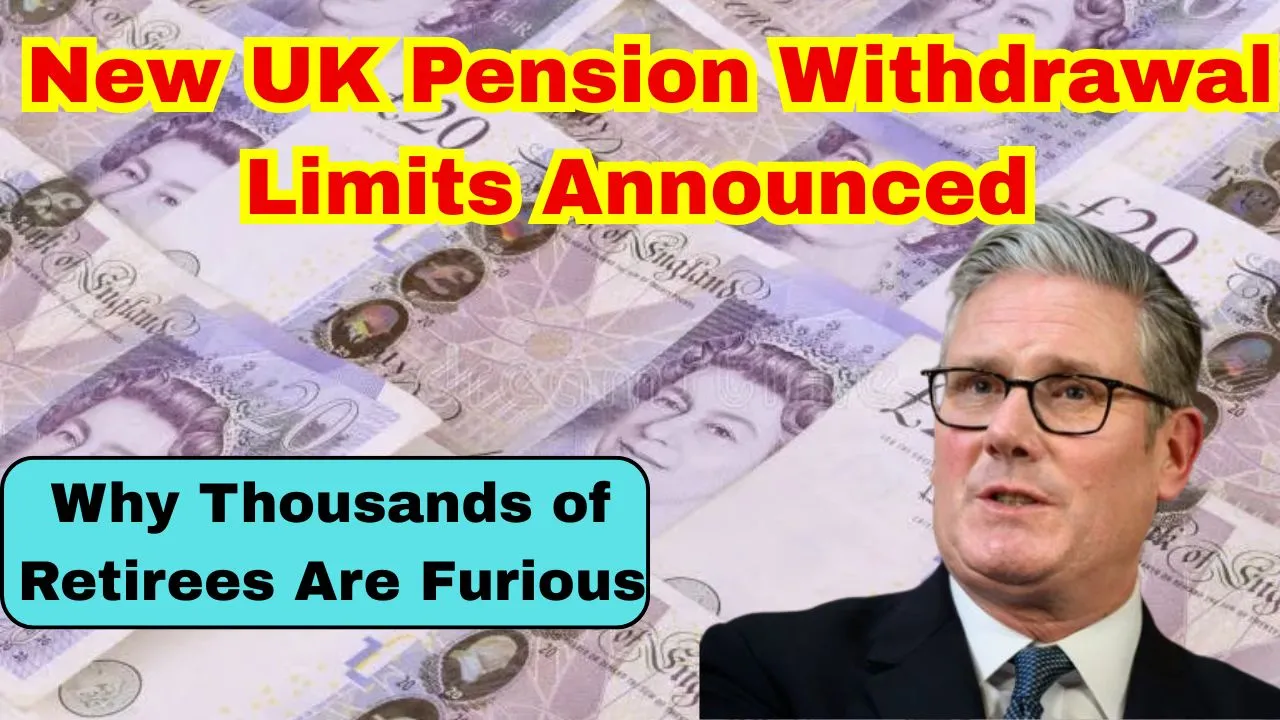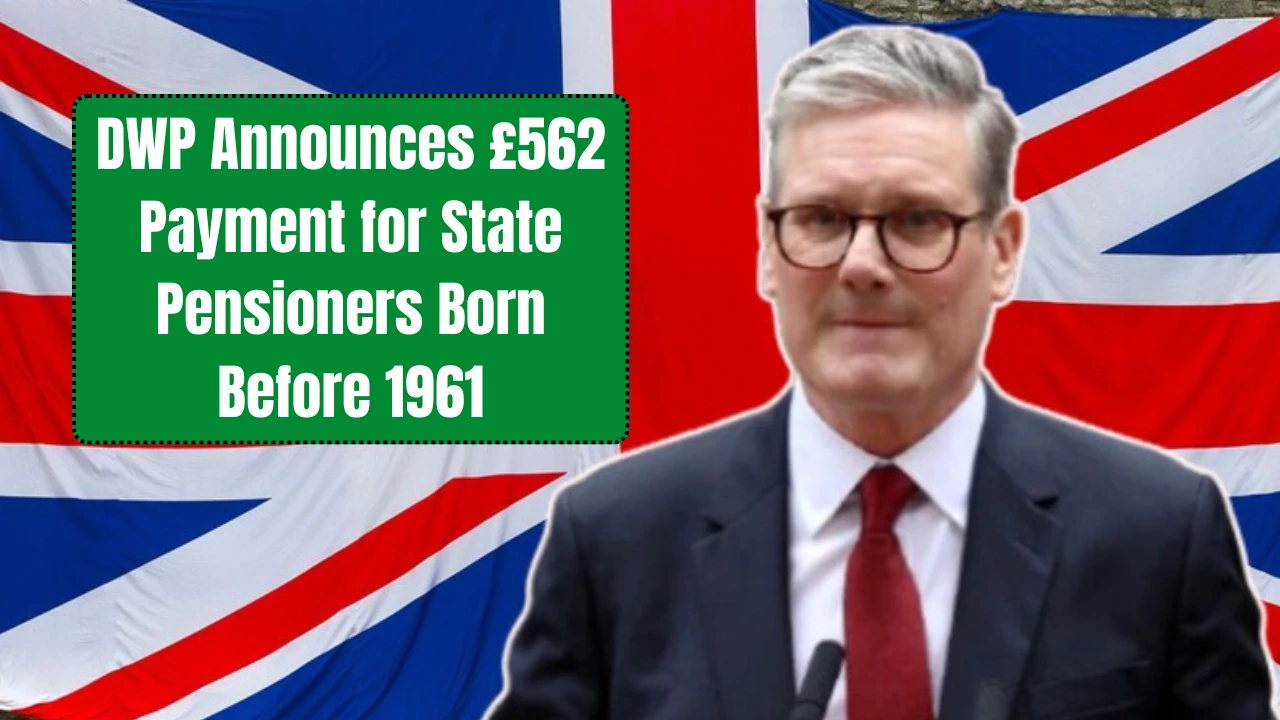The new UK pension withdrawal limits have caught thousands of retirees completely off guard. This unexpected change to pension access rules has stirred widespread frustration across the country, especially among those who spent decades saving for a comfortable retirement. Many are feeling blindsided by the government’s sudden move, which significantly alters how retirees can access their hard-earned savings.
If you are close to retirement or already drawing from your pension, the new UK pension withdrawal limits directly affect you. This article breaks down what the new rules mean, why they are causing such anger, and how you can respond wisely. From tax consequences to reduced financial flexibility, we will cover everything you need to know to navigate this sudden shift in pension policy.
What Are the New UK Pension Withdrawal Limits?
Under the New UK Pension Withdrawal Limits, the government is restricting how much retirees can withdraw from their private and workplace pensions each year. Unlike the previous pension freedoms introduced in 2015, which allowed people over 55 to access as much of their pension as they wanted, the new rules introduce a withdrawal cap. This cap is based on a sustainable drawdown rate that considers your pension size, market conditions, and life expectancy. The idea is to protect people from running out of money too early, but critics argue that this limits personal choice and creates unfair pressure on lower and middle-income retirees.
Overview Table: Key Highlights of the New Pension Withdrawal Limits
| Key Area | Details |
| Policy Name | New UK Pension Withdrawal Limits |
| Implementation Year | Expected full implementation in 2025 |
| Previous System | Pension freedom starting at age 55 |
| New System | Annual withdrawal cap based on drawdown rate |
| Government Reason | To protect long-term retirement funds and reduce state dependency |
| Estimated Cap Example | £200,000 pension fund may allow only £7,000 withdrawal per year |
| Main Concern | Loss of personal control over retirement savings |
| Affected Groups | Current and soon-to-be retirees relying on private or workplace pensions |
| Financial Impact | May force retirees into higher tax brackets or alter financial plans |
| Public Reaction | Strong backlash and demands for review or reversal |
Why Retirees Are Angry
Thousands of retirees across the UK are expressing anger and disappointment over this policy shift. Many feel they were promised full control over their retirement funds, especially after the 2015 reforms gave them that freedom. Suddenly changing the rules without proper consultation feels like a betrayal to many.
For retirees living on fixed incomes, especially those dealing with rising energy prices and healthcare costs, this cap could significantly impact their standard of living. Some may be forced to delay retirement or pick up part-time work just to make ends meet. It is not just about money; it is about independence, trust, and fairness.
Impact on Existing Pension Plans
The new rules are not just for future retirees. Even those who are already accessing their pensions will face changes moving forward. While current pension arrangements will not be canceled, all future withdrawals will be subject to the new limits. That means anyone who has planned their finances based on older, more flexible rules will need to adjust.
This could include plans for mortgage payments, supporting family, or funding healthcare needs. Financial advisors are warning clients to revisit their long-term goals and be ready to shift strategies quickly. Many are now recommending retirees build more diverse income sources outside of pensions to reduce reliance.
How the Withdrawal Cap Works
While the government has not yet finalized the exact numbers, reports suggest the annual withdrawal cap will be tied to a “sustainable drawdown rate.” That means your limit is based on your pension size and how long the government estimates your money needs to last.
For example, if the sustainable rate is set at 3.5 percent, a retiree with a £200,000 pension would only be able to withdraw £7,000 per year. That is a sharp contrast to the current setup, where many withdraw much more, especially in the early years of retirement. This structure is intended to avoid early depletion of funds, but it leaves little room for personal financial planning.
Concerns Over Fairness and Freedom
Many critics argue that this change rolls back the progress made with pension freedom reforms. The message back in 2015 was clear: retirees should be trusted to manage their own money. Now, by placing restrictions on access, the government appears to be reversing that promise.
The impact will not be felt equally. Wealthier retirees with multiple sources of income will barely notice the difference. But for working-class and middle-income retirees, who depend mainly on their pensions, the restrictions could create significant hardships. This has sparked accusations of inequality and calls for a more balanced approach that protects financial freedom.
Economic Context Behind the Move
From the government’s perspective, the policy is part of a broader effort to address long-term financial risks. Rising life expectancy, inflation, and pressure on the public purse have led policymakers to reevaluate how pensions are accessed.
Officials argue that many people are withdrawing large lump sums too early, leaving them vulnerable in their later years. They believe that placing limits on access will encourage better long-term planning and reduce the risk of individuals relying on state benefits down the line. However, many financial experts believe a better solution would be stronger financial education, not tighter rules.
The Reaction from Financial Advisors
Financial advisors across the country are being flooded with concerned calls from clients. Many are unsure how the new rules affect them and whether they should make immediate changes. Some retirees are even rushing to withdraw funds before the limits kick in, which could create tax issues or long-term losses.
Experts are urging people to stay calm, avoid emotional decisions, and get proper advice before making any moves. The key is to assess your situation, understand your options, and build a new plan that reflects the upcoming changes.
Tax Implications for Pensioners
The new UK pension withdrawal limits may also bring unexpected tax consequences. Under the previous system, retirees could control their withdrawals to stay within lower tax brackets. With the new rules, some may be forced to withdraw larger amounts at certain times, which could unintentionally push them into higher tax bands.
This has raised serious concerns among retirees who had carefully planned their retirement income to avoid exactly that. Financial advisors recommend reevaluating withdrawal strategies and looking into other ways to supplement income, such as ISAs or part-time work, to manage tax liability effectively.
Possible Alternatives Being Discussed
In response to the public backlash, several alternative solutions are being proposed by think tanks and financial experts. One suggestion is to introduce optional withdrawal limits based on professional financial assessments. This would allow those who want protection to opt in, while others retain their freedom.
Another idea is to expand government-funded financial education programs to help retirees make better decisions without restrictions. Other proposals include phased implementation, age-based flexibility, or exemptions for smaller pension pots. So far, however, the government has not signaled a willingness to change course.
Government Response So Far
Despite growing opposition, government officials are standing firm. A representative from the Department for Work and Pensions stated that the new rules are designed to promote long-term resilience and reduce the chance of retirees running out of money later in life.
They added that there will be ongoing consultations with the finance industry to ensure the policy works effectively. Still, for many retirees, this statement offers little comfort. Trust has been shaken, and confidence in the system has taken a hit.
What Retirees Can Do Now
Here are a few smart steps retirees can take today:
- Book a session with a qualified financial advisor to review your current plan.
- Do not make rushed withdrawals that could trigger large tax bills.
- Consider alternative income sources, such as part-time work or investments.
- Monitor government announcements and prepare for changes in policy.
- Use free services like Pension Wise to understand your rights and options.
Final Thought
The new UK pension withdrawal limits are shaking up retirement planning across the nation. While the government claims the goal is long-term protection, many feel this change takes away hard-earned financial freedom. As the debate continues, one thing is clear: retirees must be proactive, informed, and ready to adjust their strategies.
If you found this guide helpful, consider sharing it with others or leaving a comment below. For more updates on financial planning and lifestyle choices in retirement, explore our latest content.
FAQs
These are new rules that restrict how much retirees can take out from their pension each year, based on a sustainable drawdown model.
Yes, all future withdrawals will be affected, even if you are already accessing your pension.
Large lump sums may still be possible but could be limited under the new rules, and might result in higher tax charges.
Speak with a certified financial advisor and avoid making any hasty decisions. Planning is key.
The policy is set for implementation, but public backlash and consultation may lead to adjustments.







